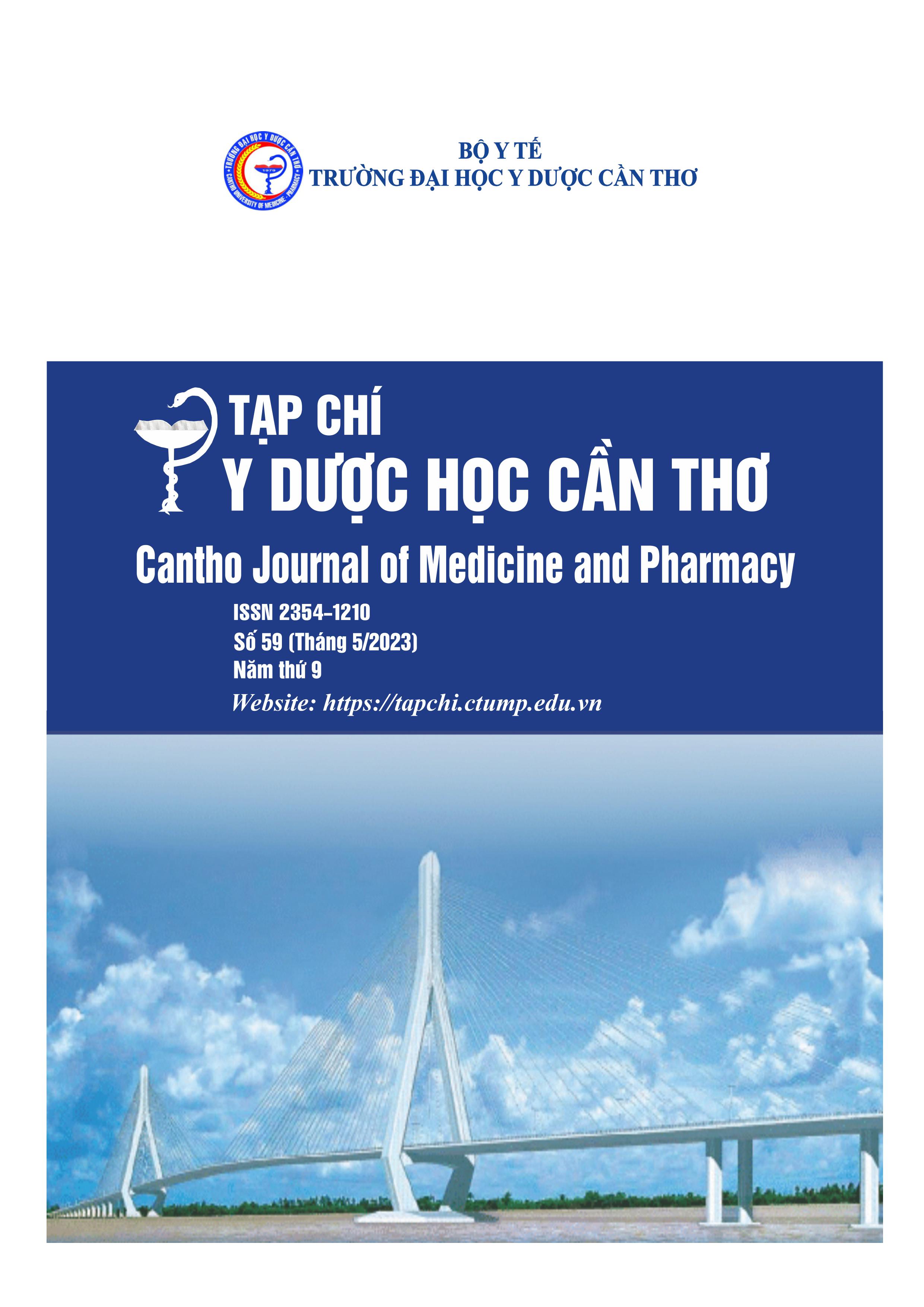STUDY ON CLINICAL AND PARACLINICAL FEATURES AND EVALUATION OF MENINGITIS TREATMENT RESULTS AT NEONATOLOGY DEPARTMENT OF CAN THO CHILDREN'S HOSPITAL
Main Article Content
Abstract
Background: Neonatal meningitis is one of the common infections causing morbidity and mortality in the world and in Vietnam. Symptoms of meningitis patients will vary depending on the causative agent, age, gender, and duration of the disease. The diagnosis of meningitis can be difficult, especially in the neonatal period, because the clinical presentation is nonspecific and lumbar puncture can be delayed due to clinical instability. Objectives: To study the clinical and paraclinical characteristics and evaluate the results of meningitis treatment in the neonatal department of Can Tho Children's Hospital. Materials and methods: A cross-sectional descriptive study was conducted on 55 pediatric patients diagnosed with meningitis at The Neonatology department of Can Tho Children's Hospital. Results: Male children accounted for 58.2%. Common clinical symptoms were fever (61,8%), feeding intolerance (50,9%), lethargy (58,1%), and jaundice (32,7%). Testing for CSF protein increased 60%, CSF glucose compared with capillary glucose decreased in 23 cases (41.8%) and increased cells accounted for 52.7%. Treatment success rate accounted for 92.7% and failure rate 1.8%. Conclusions: Meningitis was a common bacterial infection in neonates, with nonspecific symptoms that may be associated with other medical conditions. The disease tends to be more common in boys. Symptoms were not specific, in which the common clinical symptoms were fever, feeding intolerance, lethargy. Cerebrospinal fluid test protein and white blood cells are increased but positive culture results are low. The average duration of treatment was 3-4 weeks. 1.8% failure rate.
Article Details
Keywords
Neonatal meningitis, clinical, paraclinical
References
2. Huỳnh Thị Ngọc Huyền, Lê Thị Thúy Loan. Nghiên cứu đặc điểm lâm sàng, cận lâm sàng và kết quả điều trị viêm màng não ở trẻ sơ sinh tại Bệnh viện Nhi đồng Cần Thơ năm 2017-2018. Luận văn tốt nghiệp Bác sĩ Đa khoa. Trường Đại học Y Dược Cần Thơ. 2018.
3. Huỳnh Ngọc Khôi Cát, Phạm Diệp Thùy Dương. Viêm màng não muộn ở trẻ sơ sinh đủ tháng. Y học Thành phố Hồ Chí minh. 2019. 23(1), 36-40.
4. Hassan B., Heidari E., Zakeriham M. Etiology, clinical findings and laboratory parameters in neonates with acute bacterial meningitis. Iran Journal Microbiol. 2020. 12(2), 89-97.
5. Liu G., He S., Zhu X., et al. Early onset neonatal bacterial meningitis in term infants: the clinical features, perinatal conditions, and in-hospital outcomes. Medicine. 2020. 99(4), 1-6, doi: 10.1097/MD.0000000000022748.
6. Daniel G. P., Barbara M. E., Ye-Tay J., et al. Neonatal meningitis: a multicenter study in Lima, Peru. Rev Peru Med Exp Salud Pub. 2020. 37(2), 210-219, doi: 10.17843/rpmesp.2020.372.4772.
7. Phạm Thị Phương. Nghiên cứu một số đặc điểm dịch tễ, lâm sàng, cận lâm sàng và bước đầu nhận xét kết quả điều trị bệnh viêm màng não mủ ở trẻ sơ sinh bệnh viện Nhi Thanh Hóa. Tạp chí nghiên cứu và thực hành nhi khoa. 2019. 1, 39-43.
8. Tan J., Kan J., Qiu G., et al. Clinical prognosis in neonatal bacterial meningitis: the role of cerebrospinal fluid protein. Plos one. 2015. 10(10), 11-19, doi: 10.1371/journal.pone.0141620.
9. Nguyễn Thị Quỳnh Nga. Đặc điểm lâm sàng, cận lâm sàng của viêm màng não nhiễm khuẩn ở trẻ sơ sinh. Tạp chí Nhi Khoa. 2021. 14(2), 54-61.


